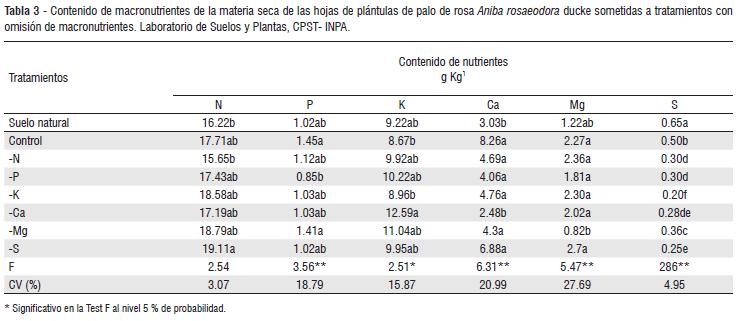Studies of nutritional requirements are of great importance for identifying the most important nutrients in physiologic development and seedling growth. A greenhouse pot experiment was conducted at INPA to evaluate the mineral nutritional demands and the effects of macronutrient omission in the plant growth of Aniba rosaeodora Ducke. The following treatments were used: Complete (fertilization with N, P, K, Ca, Mg, S, B and Zn), Standard (nature soil), Complete without N, Complete without P, Complete without K, Complete without Ca, Complete without Mg, and Complete without S. An Ultisoil with low nutrient availability was used as a substratum. The following characteristics were evaluated, relative growth rate (RGR), net assimilation rate (NAR), plant height, diameter, dry matter production of the aerial part (DMPAP) and amount of nutrient in the dry matter of leaves. We concluded from the results that: low availability of N, Ca and Mg constraints the growth of the Aniba rosaeodora plants. Seedlings of A. rosaeodora required little P, K and S. The omission of Ca and N harmed the RGR of the species. The most important elements for DMPAP were Ca and Mg; the Mg acting more in the leaf area; on the other hand, the omission of sulfur favored the macronutrient absorption (N, P, K, Ca, Mg).
Native forest; nutritional state; macronutrients; A. rosaeodora



